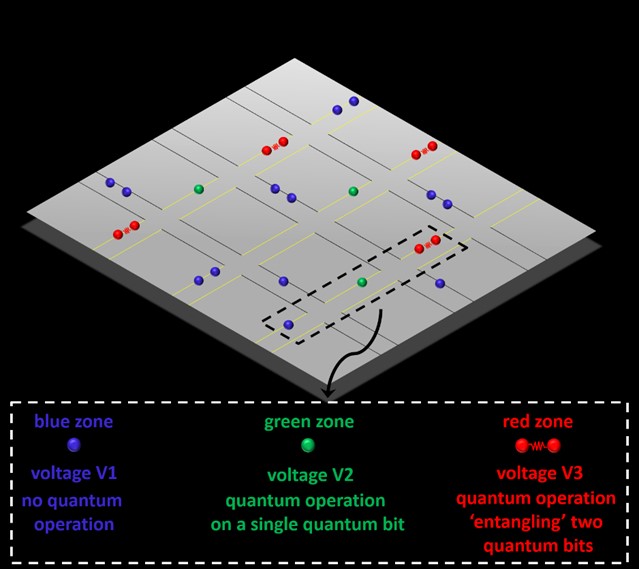
5th December 2016 Construction of practical quantum computers radically simplified Scientists at the University of Sussex have invented a ground-breaking new method that puts the construction of large-scale quantum computers within reach of current technology. Quantum computers could solve certain problems – that would take the fastest supercomputer millions of years to calculate – in just a few milliseconds. They have the potential to create new materials and medicines, as well as solve long-standing scientific and financial problems. Universal quantum computers can be built in principle, but the technological challenges are tremendous. The engineering required to build one is considered more difficult than manned space travel to Mars – until now. Quantum computing experiments on a small scale using trapped ions (charged atoms) are carried out by aligning individual laser beams onto individual ions with each ion forming a quantum bit. However, a large-scale quantum computer would need billions of quantum bits, therefore requiring billions of precisely aligned lasers, one for each ion. Instead, scientists at the University of Sussex have invented a simple method where voltages are applied to a quantum computer microchip (without having to align laser beams) – to the same effect. The team also succeeded in demonstrating the core building block of this new method with an impressively low error rate.
"This development is a game changer for quantum computing making it accessible for industrial and government use," said Professor Winfried Hensinger, who heads the Ion Quantum Technology Group at the university and is director of the Sussex Centre for Quantum Technologies. "We will construct a large-scale quantum computer at Sussex making full use of this exciting new technology." Quantum computers may revolutionise society in a similar way as the emergence of classical computers. "Developing this step-changing new technology has been a great adventure and it is absolutely amazing observing it actually work in the laboratory," said Hensinger's colleague, Dr Seb Weidt. The Ion Quantum Technology Group forms part of the UK's National Quantum Technology Programme, a £270 million investment by the government to accelerate the introduction of quantum technologies into the marketplace. A paper on this latest research, 'Trapped-ion quantum logic with global radiation fields', is published in the journal Physical Review Letters.
---
Comments »
|








